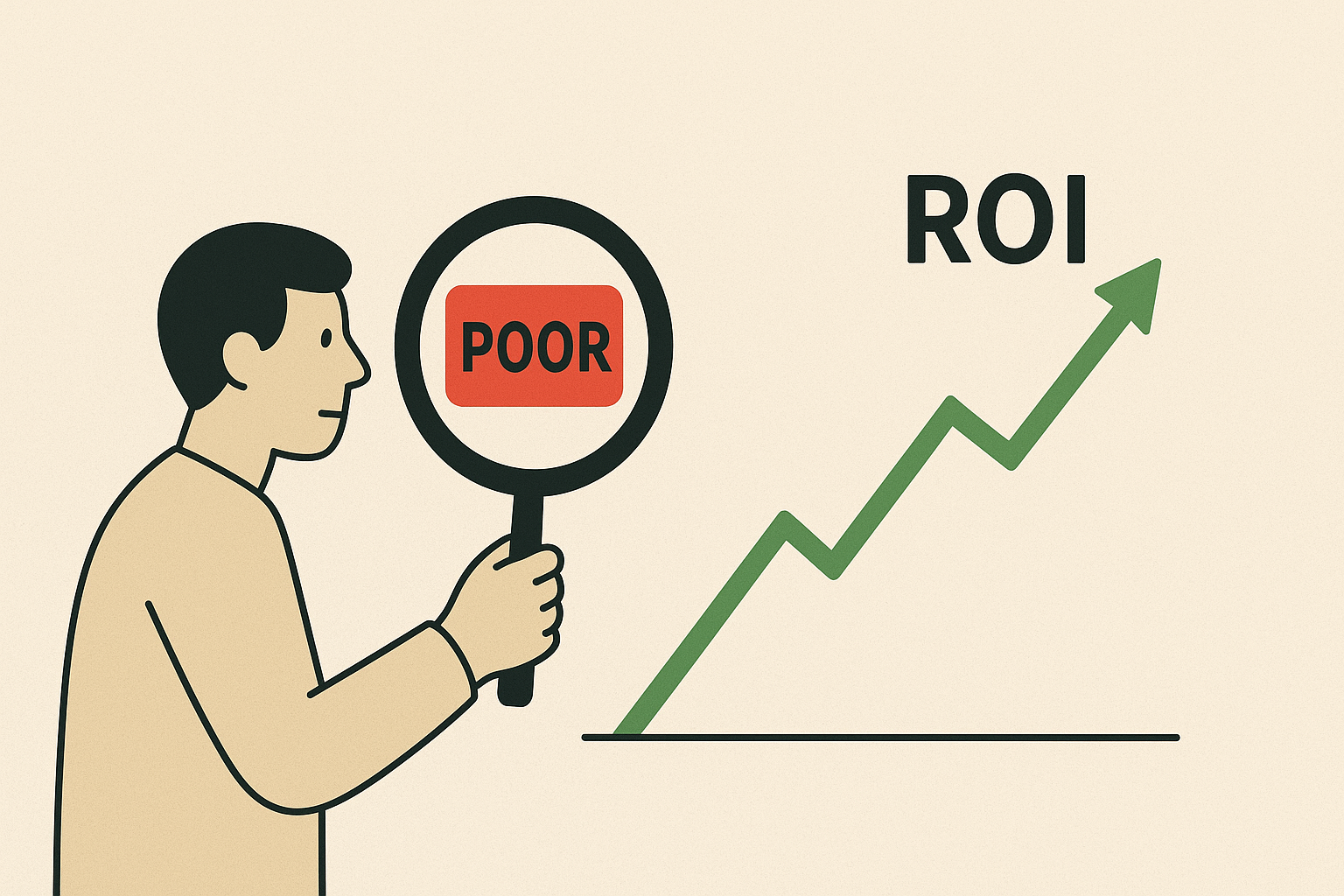The Future of Meta Advertising: Why AI-Powered Campaigns Are Changing Everything (And What It Means for Your Business)
The landscape of Meta advertising has fundamentally changed. If you’re still thinking about Facebook and Instagram ads the way you did even two years ago, you’re already behind.
Here’s what’s happening—and more importantly, what it means for your business.
_______________________________________________________________________________________________________________________________________
The Shift: From Manual Control to AI Orchestration
Meta has been quietly but aggressively moving toward what I call
“AI-first advertising.” The platform’s Advantage+ suite represents a fundamental shift in how campaigns work:
Old Model (Pre-2024):
Advertisers manually select audiences
Target specific demographics and interests
Control placements and bidding strategies
Optimize based on gut feeling and experience
New Model (2024-2025):
AI explores audiences beyond your selections
Your targeting becomes “suggestions” for the algorithm
Automated placement and bid optimization
Machine learning finds patterns humans can’t see
Here’s the thing: This isn’t just an incremental improvement. It’s a complete philosophical shift from human-driven to AI-driven campaign management.
_______________________________________________________________________________________________________________________________________
Why Meta Made This Change (And Why It Matters to You)
Three forces converged to make this inevitable:
1. Privacy Changes Killed Traditional Targeting
iOS 14+ privacy updates eliminated much of the tracking that made precise audience targeting possible. Meta’s response? Build AI that doesn’t need precise targeting—it finds your customers through behavioral patterns instead.
2. Complexity Exceeded Human Capability
Modern Meta campaigns optimize across:
10+ placement options
Dozens of creative variants
Real-time bidding adjustments
Cross-device user journeys
Dynamic audience signals
No human can process this at scale. AI can.
3. Performance Demands Increased
Your competitors are using AI. If you’re manually optimizing campaigns, you’re bringing a knife to a gunfight. Meta’s data shows Advantage+ campaigns typically outperform manual campaigns by 20-30%.
_______________________________________________________________________________________________________________________________________
What This Means for Your Business: The Good and The Challenging
The Upside: Better Performance Potential
AI finds audiences you’d never consider – We’ve seen Advantage+ campaigns convert customers that would have been excluded by traditional targeting. The algorithm identifies patterns in behavior that humans simply can’t detect.
Real-time optimization at scale – While you sleep, the AI is testing creative combinations, adjusting bids, and optimizing placements across millions of auctions.
Future-proof against platform changes – New placement? Algorithm updates? Privacy regulations? AI adapts automatically without manual intervention.
The Challenge: Success Requires New Inputs
Creative volume becomes critical – AI needs fuel. Advantage+ can test up to 150 creative combinations. If you’re only producing 2-3 ad variants per month, you’re starving the algorithm.
Data quality is everything – Your Conversion API setup, event tracking, and conversion values directly impact AI performance. Garbage in, garbage out.
Less control, more trust – You won’t see exactly who’s being targeted or why certain decisions were made. Success requires trusting the data over your intuition.
_______________________________________________________________________________________________________________________________________
The Question Every Business Leader Should Be Asking
“If AI can run campaigns automatically, do I still need marketing expertise?”
Here’s the answer: You need it more than ever—but the expertise has changed.
Think of it this way: Self-driving cars still need:
Route planning (where are we going?)
Fuel (what powers the vehicle?)
Maintenance (what happens when something breaks?)
Monitoring (is this actually working?)
AI-powered advertising is the same.
_______________________________________________________________________________________________________________________________________
What “Good” Looks Like in the AI Era
Successful Meta advertising in 2025 isn’t about campaign management—it’s about AI performance architecture.
This means:
1. Creative Strategy & Production
Old Approach: Create one ad, run it until it stops working
New Approach: Develop systematic creative testing frameworks with constant refresh
You need:
Multiple hooks and angles tested simultaneously
Video and static creative in various formats
Continuous production pipeline, not one-off campaigns
Partnership with creators and content producers
2. Conversion Infrastructure
Old Approach: Basic pixel tracking
New Approach: Advanced server-side tracking, enhanced conversions, value optimization
You need:
Proper Conversion API implementation (not just pixel)
Value-based event tracking
Clean, accurate conversion data
CRM integration for lifetime value signals
3. Strategic Oversight
Old Approach: Daily optimization adjustments
New Approach: Interpreting AI performance, diagnosing issues, making strategic pivots
You need:
Understanding when AI is learning vs. when it’s failing
Knowing when to let campaigns run vs. when to intervene
Interpreting black-box results into business insights
Strategic planning that AI can’t do (positioning, offers, seasonality)
_______________________________________________________________________________________________________________________________________
The Businesses That Win vs. The Businesses That Struggle
After managing hundreds of Advantage+ campaigns, here’s the pattern we’ve observed:
Advantage+ Works Brilliantly For:
E-commerce with product catalogs – AI loves variety and data
Established brands with conversion history – AI needs data to learn
Businesses with strong creative resources – Feed the algorithm
Companies that trust data over opinions – Let AI explore
Scaling proven offers – AI finds new customer segments
Advantage+ Struggles With:
Brand new businesses – Not enough conversion data for learning
Complex B2B with long sales cycles – AI optimizes for short-term signals
Small local businesses – Audiences may be too narrow
Limited creative production – Can’t feed the algorithm enough variants
Businesses requiring targeting transparency – “Trust the AI” doesn’t work
_______________________________________________________________________________________________________________________________________
Three Strategic Questions to Ask Right Now
1. “Do we have the creative velocity to compete?”
If your competitor is testing 50 creative variants and you’re testing 3, who do you think wins? AI can only optimize what you give it.
Action: Audit your content production capability. Can you produce 10+ ad variants per month? If not, that’s your bottleneck.
2. “Is our conversion tracking actually working?”
Most businesses think their tracking is fine. Most businesses are wrong. If your Conversion API isn’t properly implemented, AI is flying blind.
Action: Run a tracking audit. Test purchases, leads, and key events. Verify data matches between Meta and your analytics.
3. “Are we positioned for AI-era competition?”
Your competitors are using these tools. If they’re feeding Meta’s AI better creative, better data, and better strategic inputs, they win—even if their product is worse.
Action: Benchmark your Meta performance against industry standards. If you’re not using Advantage+, you’re likely falling behind.
_______________________________________________________________________________________________________________________________________
The Bottom Line
Meta’s shift to AI-powered advertising isn’t coming—it’s already here.
The question isn’t whether to embrace it. The question is whether you have the infrastructure to succeed with it:
Creative production systems
Advanced conversion tracking
Strategic expertise to guide AI
Commitment to testing and learning
The businesses that figure this out first will dominate their markets.
The businesses that ignore it will wonder why their ads stopped working.
_______________________________________________________________________________________________________________________________________
What We’re Seeing
At Best Practice Media, we’ve been deep in Advantage+ campaigns for the past 18 months. Here’s what we’ve learned:
Clients who embrace AI-first strategies see 20-40% improvement in ROAS
Creative production is now 50% of campaign success (vs. 20% two years ago)
Proper Conversion API setup can make or break performance
The “learning phase” is real—businesses need patience for AI to optimize
Strategic oversight matters more than ever (knowing when to intervene)
The agencies and businesses winning right now aren’t the ones fighting the AI revolution—they’re the ones learning to architect performance systems around it.
_______________________________________________________________________________________________________________________________________
Ready to Talk Strategy?
If you’re running Meta ads and haven’t thought about these questions, let’s talk. The gap between AI-optimized campaigns and manual campaigns is only getting wider.
The cost of waiting is measured in lost customers and wasted ad spend.
Drop a comment or send me a message. Happy to share what’s working (and what’s not) in the AI era of Meta advertising.
What’s your experience with Advantage+ campaigns? Are you seeing better performance, or struggling with the lack of control? Let’s discuss in the comments.
_______________________________________________________________________________________________________________________________________
About Best Practice Media
We’re a digital marketing agency specializing in AI-powered Meta advertising strategies. We help businesses architect performance systems that maximize Meta’s machine learning capabilities through superior creative, data infrastructure, and strategic oversight.
#MetaAds #FacebookAdvertising #InstagramAds #DigitalMarketing #AIAdvertising #PerformanceMarketing #EcommerceGrowth #MarketingStrategy






